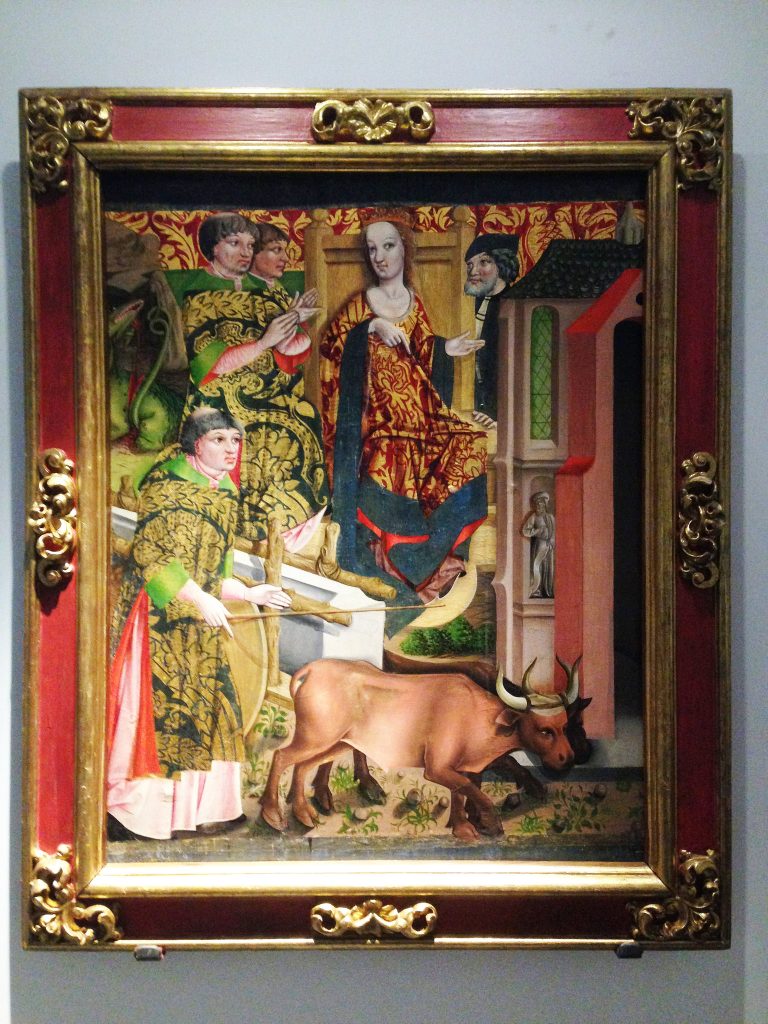Camino Photo of the Day: the Astonishment of Queen Lupa
This panel in the Cathedral museum in Astorga depicts a legendary event from the translation of the remains of Saint James to their current location in Santiago de Compostella. It involves a hostile local Celtic ruler whose name comes down to us as Queen Lupa, as well as recalcitrant oxen and a fire-breathing dragon.
The Golden Legend, Volume II, trans. William Granger Ryan, p.6
Lupa heard [that the King and his people had been converted to Christianity] and took the news badly, and when the disciples came to tell her that the king had given his consent [for a burial place for St. James], she answered: “Go and take the oxen that I have in a place in the mountains, put together a wagon to carry your master’s body, and build a tomb for him wherever you choose!” This was wolfish thinking, because she knew the oxen were really wild, untamed bulls, and thought they could be neither yoked nor harnessed, and if they were harnessed, would run off in different directions, demolishing the wagon, losing the body, and killing the disciples themselves.
But no wisdom can prevail against God. The disciples, not suspecting the queen’s ruse, went up into the mountain. A fire-breathing dragon came charging upon them, but they met him with the sign of the cross and split him up the middle. They then made the sign of the cross over the bulls, which suddenly became gentle and submitted to the yoke. Next they put Saint James’ body, with the rock upon which they had laid it, on the wagon. The oxen, with no one guiding them, hauled the body into the middle of Lupa’s palace. This was enough for the queen. Recovering from her astonishment, she believed and became a Christian, granted everything the disciples asked for, gave her palace to be a church dedicated to Saint James, endowed it magnificently, and spent the rest of her life doing good works.
Date: 20 April 2016
Place: Astorga (Castilla y León, Spain)

